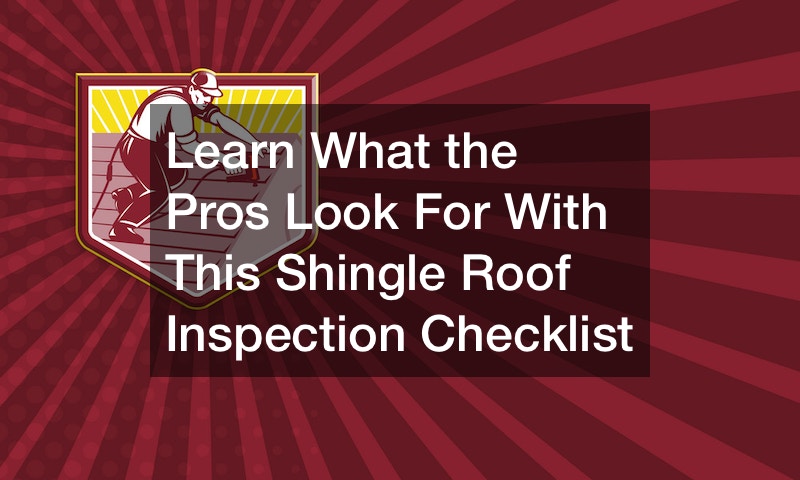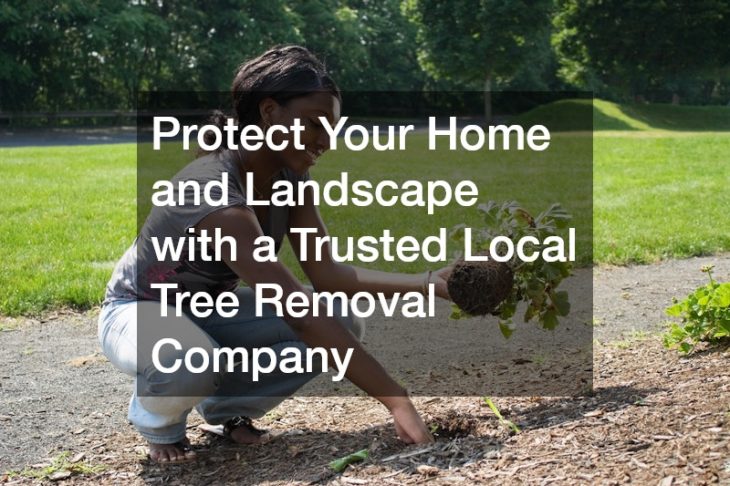
Learn What the Pros Look For With This Shingle Roof Inspection Checklist
Your roof is one of the most critical components of your home’s structure. It protects the structure, your family, and your possessions from the elements, so it’s essential to ensure that it’s in good condition. Regular roof inspections are vital to catch any issues before they become major problems. Taking the time to learn about the professional shingle roof inspection checklist can help you to recognize roofing problems before they get out of control.

Why Are Roof Inspections Important?
Regular roof inspections are crucial for preserving the integrity of your shingle roof and preventing costly repairs. Professionals like roofing contractors follow a thorough shingle roof inspection checklist to assess a roof’s condition accurately. By learning what the pros look for during inspections, you can take a proactive approach to roof maintenance and extend the lifespan of your roof.
Whether you’re a homeowner looking to maintain your roof or a roofing professional seeking to enhance your skills, this checklist will help you identify common roofing issues and determine when to consult a roofing contractor. The inspection should begin with an assessment of roof installation. This first critical evaluation can reveal a lot about a roof.
1. The Starting Point
The roofing contractor would visually inspect the roof installation to ensure that the shingles are all properly aligned and spaced evenly. They will confirm that flashing, such as drip edge and valley flashing, is correctly installed. An installation error can cause your roof to fail prematurely.
As part of the inspection process, the underlayment will be inspected for any tears, gaps or signs of moisture build-up. The vents and exhaust fans will also be checked for proper installation and to ensure the seals are free from cracks and gaps. Each area of the roof will be checked for proper installation of the roofing materials. You can learn to do this on your own by following the shingle roof inspection checklist.
If an installation error is found during the inspection, the best way to address the problem is to remove the material from that section and have it reinstalled correctly. By addressing the problem, you can save yourself a significant amount of money. You can also reduce the risk of serious damage to your roof.
2. General Exterior Inspection
A general contractor or you can examine the roof from the ground to quickly recognize problem areas. There are several signs that your roof needs attention that can be revealed just by examining the exterior of your home. The shingle roof inspection checklist lays out the things you should look for.
Look for missing or damaged shingles. Replace any that are cracked, curling, or have granule loss. Check for moss, algae, or mold growth, which can indicate moisture problems. Inspect the gutters and downspouts for debris or clogs that may lead to water backup. Examine the roof for signs of sagging or unevenness, which could indicate structural issues.
Local roofers will get on the roof to do the inspection because that is part of their job, but if you want to use the shingle roof inspection checklist and keep your feet firmly on the ground, you can. If you notice sagging, mold growth, or any other items on the list, you will need to call a professional roofer to do a more complete inspection. The goal should be to become familiar with what to look for that indicates the roof is damaged and in need of repairs. Of course, a roofing business assessment will be far more in-depth than what a homeowner would do. The shingle roof inspection checklist is a guideline.
3. Call a Professional When You Need To
Consider consulting a roofing contractor for a professional evaluation if you identify extensive or widespread shingle damage. Signs of roof leaks or moisture penetration. Structural concerns, such as sagging or compromised support. Missing shingles.
If you find roof shingles in your yard, that is a good indicator that you need to connect with one of the local roofing companies. Unfortunately, shingles often are affected by storms and can work loose from the roof. Finding roof debris in your yard is something that you shouldn’t ignore.
When you find roofing material in your yard, it means that your roof is at a great risk of serious damage. Even one lost shingle can greatly impact your roof. A periodic sweep of your roof and your yard after every storm can alert you to potential damage early on.
Keep the shingle roof inspection checklist handy so that you can consult the list after each storm. Keeping abreast of any immediate changes to your roof will ensure that you can act quickly and avoid some of the major damage that can be caused by roofing issues. A roofing service is there to help get your roof back in tip-top condition.

4. Commercial Roofs Need Special Care
The shingle roof inspection checklist can be modified for commercial roofs. For commercial roofing systems, the inspection checklist may include additional considerations. A commercial roofing business is an expert in inspecting commercial roofs that you typically don’t find on residential properties.
For example, a commercial roof company would add to the shingle roof inspection checklist to check low slope roofs for ponding water. Ponding water on flat or low-slope roofs can prematurely age the roof, potentially indicating a roofing problem. Another inspection factor on the commercial roof inspection checklist that you won’t find on residential roof checklists is to evaluate of the condition of membrane roofing materials.
On many commercial roofs, you will find HVAC equipment. You may find entire HVAC units or vent stacks. These units need to be checked to ensure there is proper sealing around the units where they encounter the equipment. Joints and seams on flat roofs of roofs with TPO or EPDM membranes also need to have the joints checked.
If you have a commercial roof that is similar in design to a residential roof, then you can probably use the shingle roof inspection checklist without modifying it. However, if your commercial roof is markedly different from most residential roofs, you will need to focus specifically on an inspection checklist for your type of roof. Of course, you can always call the professionals to learn more about what should be inspected on a commercial roof.
5. Schedule Roof Maintenance
While using the roof shingle inspection checklist is a great way to stay on top of the condition of your roof, did you know that you should have annual maintenance done to your roof? You can save yourself time and effort by having professional maintenance done annually. During the maintenance process, the roofer will do the inspection.
Roof maintenance can range from simple activities like removing leaf litter and other organic debris to reinforcing flashing, replacing loose shingles, and repairing small sections that are damaged. Roof maintenance is the single best way to extend the life of your roof. Maintenance activities are an affordable way to preserve the integrity of your roof.
According to the Roofers Guild, the lifespan for a mid-range shingle roof is 15–30 years. Caring for your roof can ensure that your roof’s lifespan is at the higher end of the spectrum. Some roofing companies offer maintenance agreements that make the annual maintenance your roof requires more affordable. Consider paying for an annual maintenance contract.

6. Know When to Replace Your Roof
Using the shingle roof inspection checklist as your guideline can also help you to determine when it is best to replace your roof. The typical industry rule of thumb for roof replacement is if more than one-third of the roof needs repairs, but that is not the only indicator of when you should replace your roof. There are other signs that replacement may be a better choice than repairs.
If your roof is nearing the end of its expected lifespan and starts to show serious signs of wear and tear, it may be more cost-effective to bite the bullet and replace the roof. Sometimes, throwing good money after bad on repairs is just a waste. You can benefit by getting ahead of the problem and considering roof replacement instead of making additional repairs.
A new roof is a significant investment but comes with a high return. For example, a new shingle roof can come with a 65% return on your investment; a new metal roof can come with a 100% return on your investment. Of course, the investment will also give you peace of mind and better protect your home. You may also realize some impressive energy savings.
7. Safety First, Always
It is very important to monitor the condition of your roof. However, it should never be at the expense of your safety. If you are going to use the shingle roof inspection checklist and get on the roof, be sure you have the proper safety equipment handy. You should also ensure that you have someone standing by while you do the inspection.
Most homeowners prefer to leave the inspection to professionals. There are many fall reports filed every year by homeowners who were working on their roofs. There are ladders to navigate, and the slope of the roof that you will need to navigate as well. It can be tricky to avoid injuries when working on a roof.
According to the Department of Labor, roofing is one of the top three most dangerous jobs. If you are going to get on the roof, ensure that you are taking all precautions. It is essential to have someone on the ground for support.
Invest in personal protection equipment that will reduce the risk of serious injury. Use a sturdy ladder. If you are uncomfortable don’t follow the job through, call for professional support. A reliable roof is essential to the safety of your home, but never at the risk of injuring yourself.
8. Keep Trees Trimmed
One of the items on the shingle roof inspection checklist has less to do with your roof and more to do with the environment surrounding your roof. Keeping trees trimmed back so they are not overhanging on your roof is essential advice. Tree limbs that are hanging over your roof are a recipe for disaster.
Even healthy trees can become a hazard during storms and high winds. To avert disaster, you should keep your trees trimmed back. Not only will you avoid the risk of a tree limb breaking off and crashing through your roof, but you will also avoid leaf litter piling up on your roof. Leaf litter can stain your roof and be a catalyst for a mold problem.
It is strongly recommended that you work with a certified tree company to manage the trimming of your trees. They will have the equipment and the skills necessary to safely remove limbs around your roof. Typically, this is not a task that the average homeowner is prepared to manage on their own.
Inspecting your roof for any wayward trees can help you to avoid problems in the future. Keep trees trimmed and away from your roof. Get professional help to manage trees on your property.

9. Don’t Forget to Do This
Finally, part of the shingle roof inspection checklist recommends that you evaluate the inside of your home to detect a problem on the outside of your home. Check your attic for any water stains. Feel the rafters in your attic (if the space is unfinished) for any moisture or damp spots. These can be early signs that your roof is having issues. Check venting to ensure that it is free and clear of debris.
A comprehensive shingle roof inspection checklist is a valuable tool for homeowners and professionals alike. By following these guidelines, you can assess the condition of your roof, identify potential issues, and take appropriate action to ensure its longevity. Remember that roofing is a specialized field, and when in doubt, it’s wise to consult with experienced roofing professionals and contractors.

